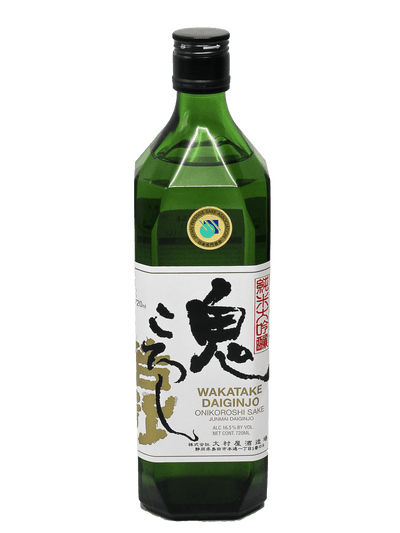What Is a Hybrid Grape and How is it Changing the Wine Industry?

I lived long ago in budding new wine regions receptive to (or dependent on) hybrid grapes, like New York’s Finger Lakes in the 1980s and Nova Scotia in the early 2000s, and in areas not receptive to hybrids, like Santa Barbara County and Oregon’s Willamette Valley in the 1970s. The difference was that the former regions were considered climatologically marginal for European wine grape production, while the others sat in prime Vitis vinifera territory, with adequate sunshine, warmth, a fewer limiting factors, like mildew or winter kill. But, hybrid grapes helped establish these wine appellations, leading ultimately, to these areas making wine without using hybrids.
What is a Hybrid and What’s the History?
First, let’s define what is a hybrid wine grape and how that differs from, say, a cross. Historically this goes back to advances in viticulture and the phylloxera epidemic. Phylloxera is a root louse, a parasite, native to North America. It kills vines. When Europeans discovered grape vines in North America, they saw great potential: a plethora of new grape varieties! A good example is the Concord grape, a cultivar derived from the American grape species Vitis labrusca. The problem was that these grape plants were actually distinct species from the European wine grape plant, Vitis vinifera. Unknowingly, they transported the root louse to Europe when they brought native North American vines back with them. These sneaky parasites found their way into French vineyards and ultimately spread to all wine growing regions, including Spain, Italy, and yes, even California. The solution to the phylloxera epidemic proved to be grafting the roots of North American species, which resisted the louse owing to thousands of years of evolution, onto Vitis vinifera vines, which had never evolved to resist this parasite. The roots were safe from the louse and the vine that grew above the graft produced the European grapes! Problem solved, somewhat (Napa Valley had to replant in the 1980s and 90s because the commonly-used American rootstock proved non-resistant to phylloxera). A lot of research and plant breeding went into identifying or creating, through crosses, the best rootstocks for winegrowing.
Viticultural scientists became experts in North American grape species and breeding, including crossing. A cross is not a hybrid. A cross is when two varieties from the same species are bred, producing a new variety, which, if it’s successful and genetically stable, can be reproduced through cuttings or other reproduction methods. Take, for example, Pinotage, which was created in the 1920s in South Africa from crossing Pinot Noir and Cinsault.
But inter-breeding can also produce hybrids. Hybrids drew interest as well, in fact, particularly in the early 20th century, because they can be another solution to phylloxera as well as other limiting factors like cold tolerance or mildew resistance. This is when two distinct vine species, Vitis vinifera and a North American species, like Vitis labrusca, are bred together producing a completely new type of wine grape plant that has characteristics from both parents.
What Benefits do Hybrid Grapes Provide in Winegrowing?
In the 1970s, winegrowing in Oregon and Washington was still a question, with many critics and naysayers. That’s hard to imagine now as both are celebrated wine states, famous for wines made from European grapes like Cabernet Sauvignon and Sauvignon Blanc. But Oregon winegrowers didn’t have to use hybrids, they just used grafted vines and cool-climate varieties like Pinot Gris and Pinot Noir. The climate and the whole terroir in these regions proved the naysayers wrong, and great wines were produced using Vitis vinifera despite the relative lack of sunshine (compared to California). In areas like the Finger Lakes, it was a different story. This region of Upstate New York had long produced wine, including sparkling wines, but from American grape plants like Concord. Scientists, including prominently from my alma mater Cornell University, became interested in hybrids for such marginal climates—the area has very cold (vinifera-killing) winters and is cool overall in summer, so as late as the 1960s most European great varieties were seen as impossible to grow there. They thought the answer to improving wine quality lay in growing hybrids. So, they produced a bunch of them.
When I lived in Ithaca and Trumansburg, New York, in the 1980s, wines made from hybrid grapes dominated the local wine industry. The issues with wine made from hybrids was the flavor profile of the grapes, which although producing quaffable wines, were not what most wine drinkers accustomed to European varieties would shout about. This all began to change when an Eastern European scientist working for Cornell became convinced that cool-climate Vitis vinifera varieties could be grown there, especially on the banks of the Finger Lakes, where the huge volume of water in these very deep lakes provided suitable, moderated microclimates. His name was Dr. Konstantin Frank, and he was right! Today, the Finger Lakes is famed for its Rieslings and Gewurztraminers, but also grows Cabernet Franc and even Pinot Noir. You can order Dr. Frank’s Gewürztraminer wine from Bottle Barn, in fact. So, it turned out to be similar to the winegrowing history in Oregon. The naysayers were wrong again.
Next, when I lived in Nova Scotia, Canada, in the early 2000s, aspiring winegrowers turned to hybrids to survive the cool climate and harsh winters. The same was true in Ontario, which produces world-famous ice-wine from Vidal, which is a hybrid grape. Growing Vitis vinifera was considered impossible. Today, however, some estate wineries are producing fabulous wines from European grapes, such as Lightfoot and Wolfville Vineyards. There’s also a budding sparkling wine industry there. Again, the naysayers were proved wrong. Although most wineries still use hybrids in Nova Scotia (and Quebec), there’s a trend toward European grape production of very high quality wines.
Hybrids and the Future of Wine
This little story brings me to a few conclusions. First, the history of Oregon, the Finger Lakes, and Nova Scotia shows that Vitis vinifera, grafted onto American rootstock, can flourish in regions that previous generations thought were marginal at best, because of the prevailing climate.
With today’s rapid climate change, scientists are again looking to hybrids for potential solutions, but this time to produce grape plants able to flourish and produce good wine in what are becoming marginal area, usually because of too much heat and too little water. My personal history shows, however, that seemingly-marginal areas can prove to be superb for winegrowing. The naysayers have been proved wrong again and again. The flavor profile of most hybrids also remains an important issue, although educating consumers about these wines could help.
Overall, I believe the future lies in sticking with Vitis vinifera, including exploring the use of native varieties that were uprooted in the modern era to make way for popular varieties (like Cabernet Sauvignon in Bordeaux and Tempranillo in Spain). Such varieties are often well adapted to local climes, to drought, and to more heat. Crosses of vinifera, too, hold potential. We will see what happens!
Did you like reading about hybrid grapes? Check out more wine information on Bottle Barn’s website!
By Charlie Leary


















Leave a comment